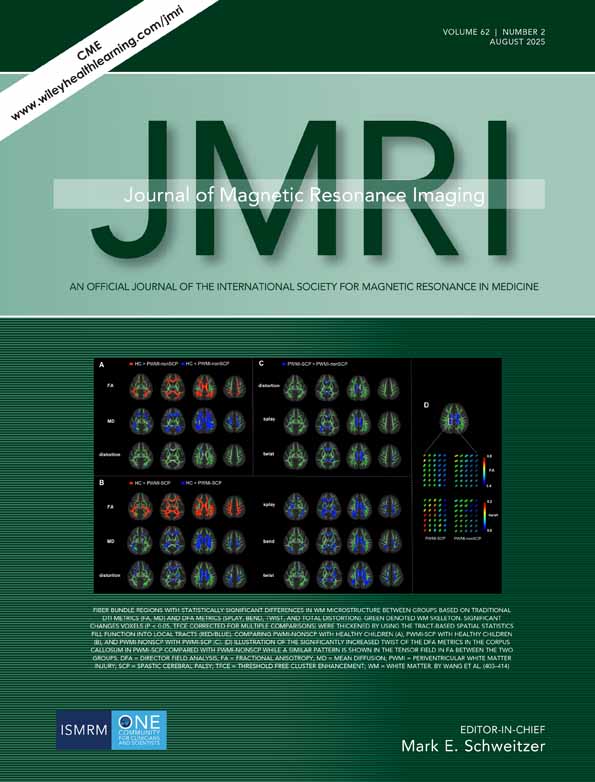On-line flow quantification by low-resolution phase-contrast MR imaging and model-based postprocessing
Abstract
Over the past decade, magnetic resonance (MR) imaging has been developed toward a tool for guiding and evaluating diagnostic and therapeutic interventions. Within the field of vascular MR-guided interventions, MR has potential for providing on-line monitoring of the blood volume flow rate, which is relevant during procedures such as balloon angioplasty and stent placement. We recently reported a hardware and software environment for enabling flow quantification every 8 seconds using nontriggered phase-contrast imaging. In the present study, the objective was to increase temporal resolution further to one evaluation per 4 seconds. We achieve this by lowering spatial resolution to 3 pixels per lumen diameter. The accuracy of the measurements is preserved by applying model-based postprocessing for quantification of the volume flow rate. Phantom and volunteer studies are presented, demonstrating the accuracy of the model-driven approach for the applied short acquisitions. The capabilities of the presented approach are illustrated by the results of several hypercapnia experiments and carotid compression tests performed on healthy volunteers. J. Magn. Reson. Imaging 2000;12:623–631. © 2000 Wiley-Liss, Inc.




